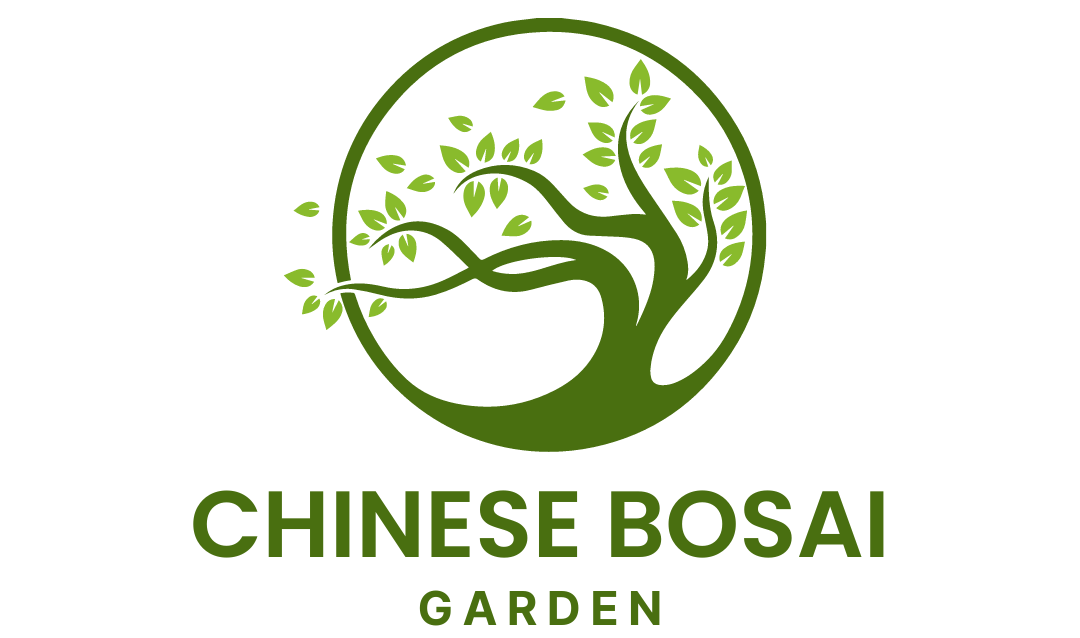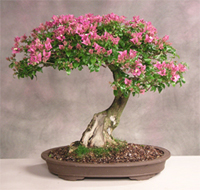
The Crape Myrtle Bonsai Tree, scientific name Lagerstroemia indica, is native to China and Korea.
It was first introduced to the southern half of the United States and England in the eighteenth century.
Crape Myrtle is an outstanding ornamental tree that became so popular because of its long blooming season of beautiful red, white, pink, or purple flowers, shiny dark green leaves that turn red, orange, or yellow in fall, and distinctive exfoliating bark.
This is a hardy tree that is usually grown outdoors but can also be adapted for indoors.
Additional Information
Family: Lythraceae (loosestrife Family)
Scientific name: Lagerstroemia indica
Common Names: Crape Myrtle, Crepe Myrtle
Origin: Native to China and Korea but is widely grown all over the world.
Appearance: Depending on the variety, crapes grow as trees that may be either upright or spreading or as large shrubs. It is a deciduous tree with very interesting smooth gray bark that is peeling in thin flakes exposing mottled inner bark in some combination of gray, pink, cream, tan, and brown colors. Dark green leaves turn red, yellow, and orange during the fall months.
Flowering: One of the main reasons why this tree is so popular is its six-petaled white, red, pink, or purple flowers that are produced from June until September. Flowers are born in clusters at the beginning of the summer, followed by brown or black fruits. When mature they dry and split releasing disk-shaped seeds.
Outdoor/Indoor Use: Both. It is really an outside tree that can be grown indoors if provided with bright light and cool temperatures during winter months. Cool temperatures are required in order to trigger dormancy indoors.
Light Requirements: It prefers full sun. If grown indoors place near the window with a lot of natural sunlight.
Water Requirements: Should be watered daily during the growing season. Needs less watering during winter months. Do not allow the soil to dry out completely.
Pruning/Training: I don’t recommend using wires since the bark is very fragile and wire can easily leave a mark. After the blooming is over, prune shoots back to two or three leaves to style and promote the development of flowers the following year.
The next crop of shoots will bear the flowers and should not be trimmed until you can see where the flower buds have developed. You need to decide if you want a year-round neat tree or flowers. If you want flowers, don’t pinch out any growth until late summer.
Bonsai Style: Cascade, semi-cascade, slanted, root-over-rock, and curved-trunk.
Fertilizing: Feed with a well-balanced liquid fertilizer every two weeks during the growing season.
Repotting: Needs to be repotted every year or three depending on the root growth and age, in early spring before leaves unfold. It likes moist well-drained soil, so you can use a standard bonsai soil mix.
Hardiness: Grows best in USDA Zones 7-9. This tree is hardy but needs to be protected from freezing temperatures. Maintain 45-50F temperature during winter.
Insects and Diseases: Aphids, powdery mildew
Propagation: By cuttings or seed. Easy to root.
Crape Myrtle Bonsai – $49.95
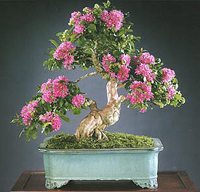
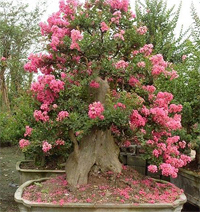
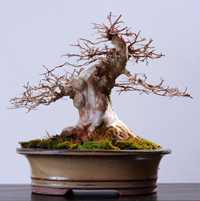 | 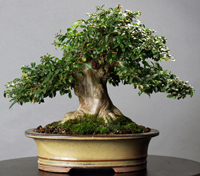 |
